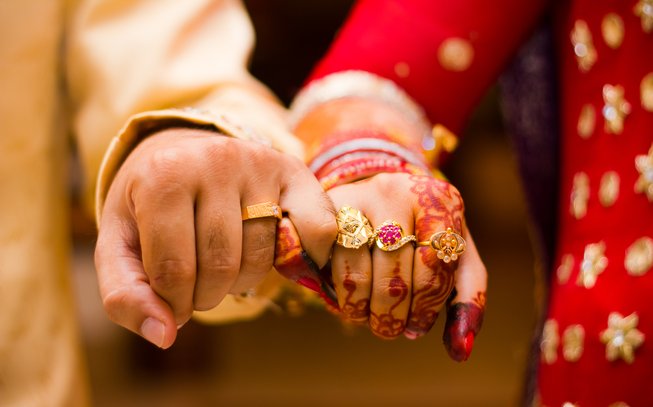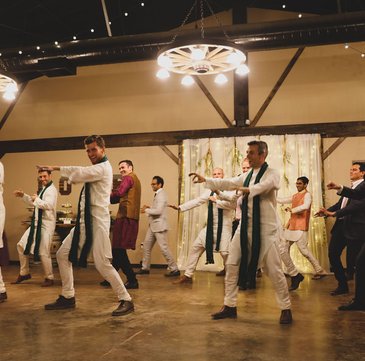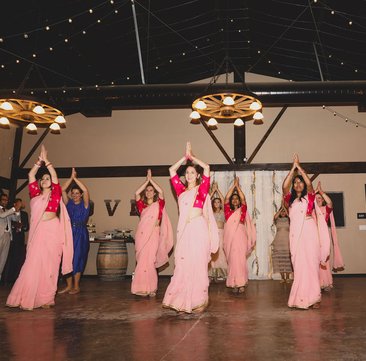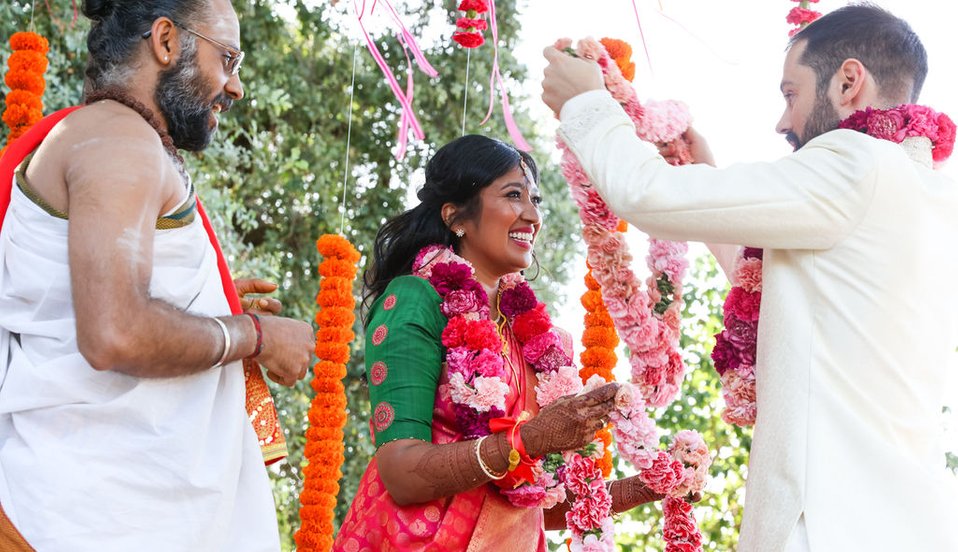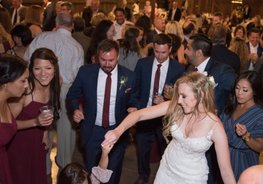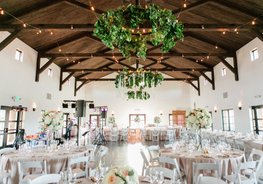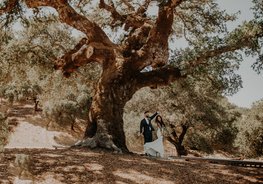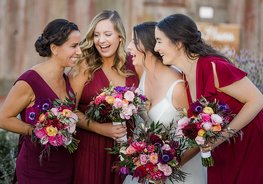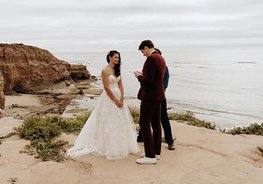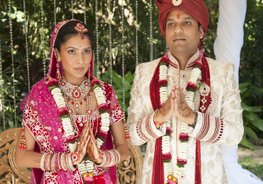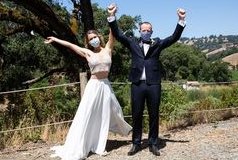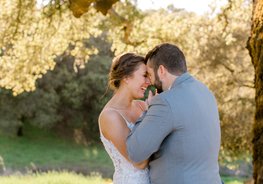Wedding Ideas and Planning Tips from Industry Professionals here at Ybarra Events
Wedding planners are more than just event planners. We're designers, problem-solvers, coordinators, budgeteers, part-time therapists, and friends to the couples and families who are entrusting us to help them with their events. Since we're on friendly terms now, here are some tips and tricks to the trade of navigating wedding planning!
Indian Wedding Traditions
Indian Weddings are compiled of many different rituals, some of them taking place before the wedding! The leading days up to the Wedding day are full of love, family and beautiful traditions. What are the ceremonies, how early do they prepare, and how do they celebrate? Of course, each region and family has their own traditions, but here is a breakdown of what you usually can expect at an Indian Wedding.
updated: 09/20/2020
Before the Wedding
Tarik Ceremony
The Tarik Ceremony is one of the most flexible rituals when it comes to Indian wedding ceremonies. Traditionally, it takes place a month before the wedding date, but modern day convenience has made it easier to schedule and perform this ritual. Today, this can be performed according to tradition or in the days before the wedding. In this Indian wedding ceremony, the groom’s offer of marriage is officially accepted by the bride’s family. Male members of the family present the groom with gifts and adorn his forehead with kum kum powder.
Barni Bandwhana
The Barni Bandwhana takes place about 15 days before the wedding. During the Barni Bandhwana, a mauli is tied around both the groom and his parents’ wrists for prayer. The Mayara is a common practice for both the bride and the groom to celebrate their arrangement and good fortune. The maternal uncle of both parties makes his way to his sister’s house and presents them with gifts – typically the garments worn on the wedding day.
The Wedding
A traditional Indian wedding celebration lasts at least three wonderful tradition-filled days.
Day 1
On the first night, both the groom and the bride’s families gather at home for the Ganesh Pooja. This is an informal and intimate get-together of close relatives as an opportunity for the families to get to know each other.
Day 2
On the second day, the women will gather for Mehndi, or henna, preparations. Henna is a very sacred part of an Indian wedding. Mehndi takes about 8 hours to dry, so it is painted onto the women’s skin in the morning and is allowed to set for the rest of the day. It's traditional to hire a professional to paint the intricate patterns onto the hands and feet of the bride and her closest family and friends. Generally the henna is left on the skin until it drys and flakes off on it's own. The darker the mehndi, the better! Even after it flakes off, it usually continues to darken slightly.
After the henna, on the second night it is tradtional to host the sangeet ceremony. By this time, the henna should be dried, and the bride and groom, their families and friends, and even some of the wedding guests are invited to mingle and enjoy a meal. Typically during this party, the bride and groom’s close friends and relatives perform traditional dances for the couple.
Day 3
Finally, the third day is the formal wedding! The day where the bride and groom will get in front of their families and friends to be married. At the front of the alter is the mandap. The mandap is a structure with four pillars, open on the sides and covered on top. The pillars each represent one of the four parents. Before the ceremony, the groom and his soon-to-be mother-in-law meet there, where she’ll wash his feet and offer him milk and honey. While his feet are being washed, the bride’s sister tries to steal his shoes. If she succeeds, the groom must pay her to get them back! They then depart for photos and to finish getting ready.
Ceremony
The Entrance
The ceremony begins with the baraat, or the groom’s arrival. He arrives to the ceremony on a decorated white horse, or sometimes and elephant, as family and friends circle around him singing. Once he descends, he is greeted by the bride’s parents and family and is presented with gifts. The elders then escort the groom to the mandap in a processional called var puja. There, he is expected to remove his shoes before being seated. The bride makes her entrance, escorted down the aisle by her uncle. When she reaches the mandap, the bride and groom each place a floral garland around the other’s neck to show their acceptance for one another.
The Customs
The wedding couple and the bride’s parents are seated under the mandap with the pandit (the priest). A ceremonial fire pit is in the center. The wedding couple is asking Agni, the god of fire, to bless them with a long marriage, as Agni is the god that gives life. The bride and groom then proceed with the mangalphera which is a ceremony where they circle the fire pit four times. Each circle around the fire pit represents a marriage goal: dharma (morality), artha (prosperity), kama (personal gratification), and moksha (spirituality). Some couples may also choose to be joined together by string or by scarves as they walk, but not all couples practice this tradition. The pandit chants verses as they walk the circles and this is what officially ties them together in the eyes of the gods. After their fourth circle around the fire, they are officially married! They then must raced to be the first to sit. Whoever sits first is said to be the more dominant partner in the marriage! The groom then places red kum kum powder on the bride’s forehead and adorns her with a necklace made of black and gold beads, called a mangalsutra. Depending on what tradtitions the couple would like to follow, they may want to incorporate western traditions too. If so, this is when they typically exchange wedding rings and kiss!
Reception
Now it's time to celebrate! The newlyweds now celebrate with family and friends at the reception. They may dance the bhangra, which is a traditional folk dance. Much of the wedding reception traditions are the same as western traditions. The wedding guests will also enjoy dinner, drinking, dancing, and cake!
After the wedding
The following day, both sides of the families meet for Bou Bhat. This is a lucheon where the groom’s family officially invites and accepts the bride into their family. The groom then pledges himself to his bride, and promises to support her and provide her with food and clothing. To prove this, he presents her with a new sari and a meal.
Finally, a few days or weeks after the wedding, more extended family give their blessing over the marriage with the Aashirwad. The bride’s family will go to the groom’s house and present them with gifts and give their blessings and the groom’s family will, in turn, do the same for the bride’s family.
Indian Wedding Traditions are full of meaning, love, and bonding. Following these customs and knowing their symbolic meaning make the wedding ceremonies even more beautiful to experience. If you are attending an Indian Wedding, I envy you. You are in for a heartfelt and joy-filled event.
About the Author:
Tara Ybarra, Co-Owner and Event Planner for Ybarra Events, has been in the Wedding Industry for over 20 years. From Photographer, to Wedding Cake Artist, to Florist, to Officiant, and now Wedding Planner, her accumulated experience, paired with her College Courses in Event Planning, have given her the experience she has today. Blogging gives her an opportunity to share that knowledge with her readers.
Ybarra Events is located in California’s spectacular Napa Valley. Ybarra Events are the pièce de résistance of wedding planners. Run by the dynamic duo of Tara and James Ybarra, they help couples organize, design, and plan their nuptials at some of the most fabulous and luxurious wedding venues in Napa, Sonoma, San Francisco, and Beyond. Chat with them today to start planning the wine-country wedding of your dreams.




